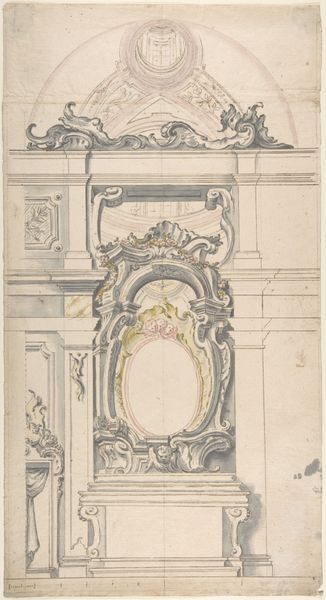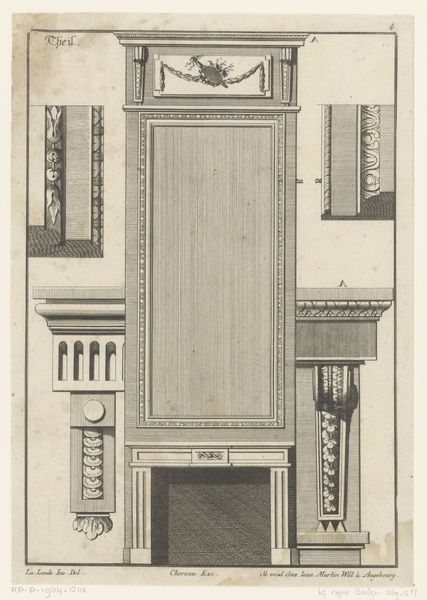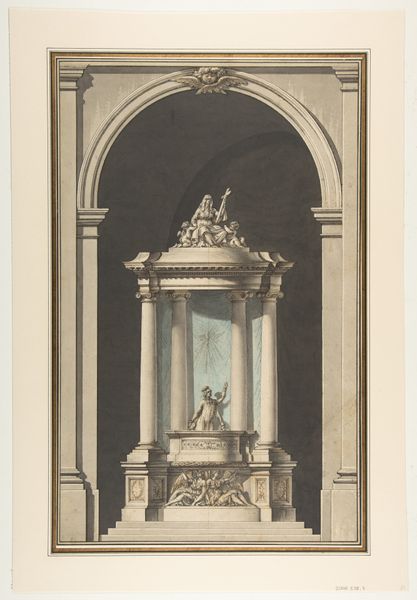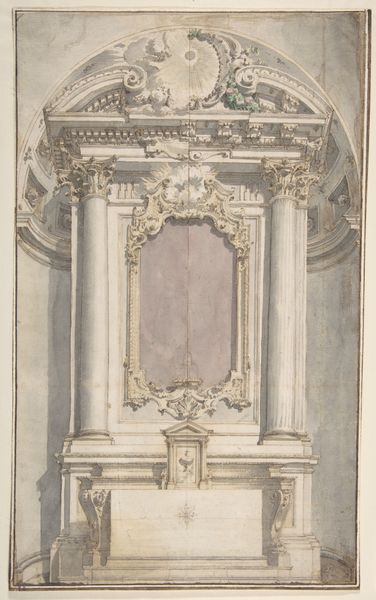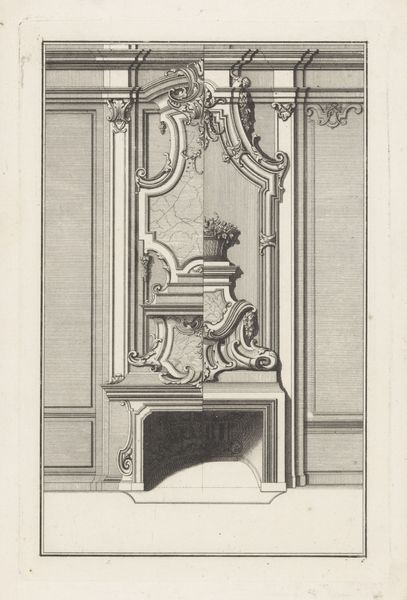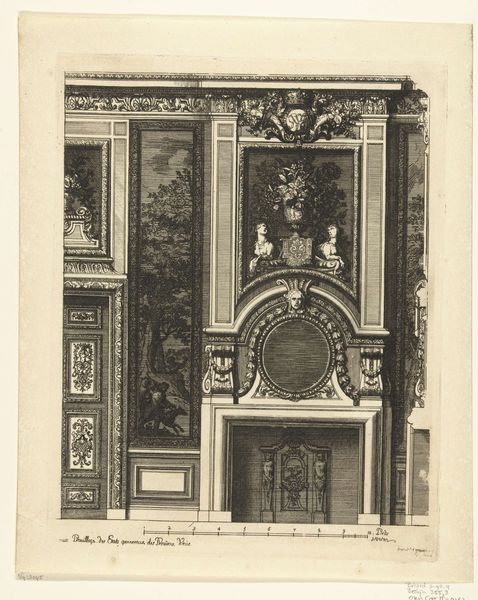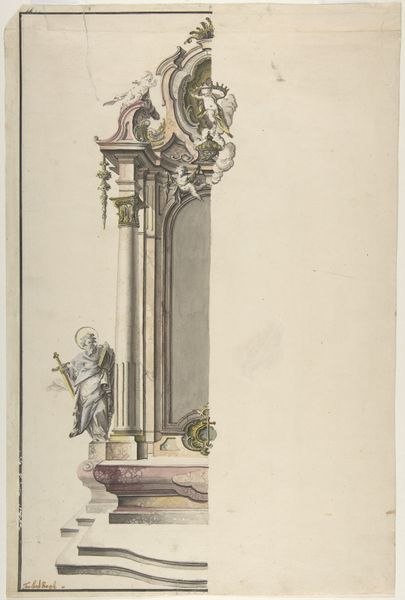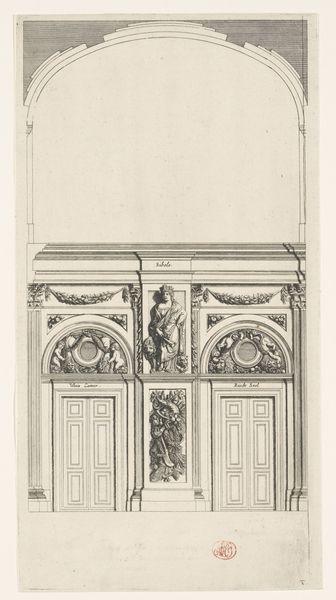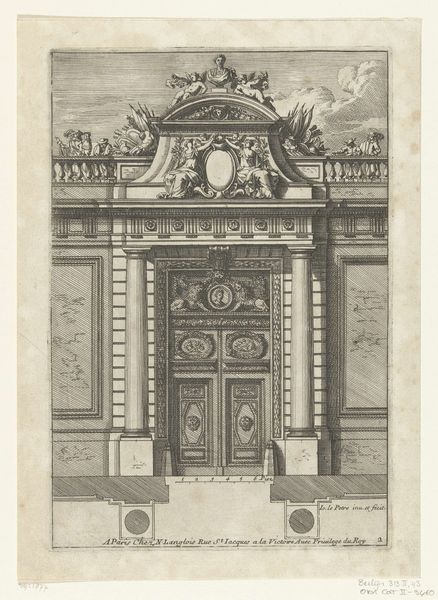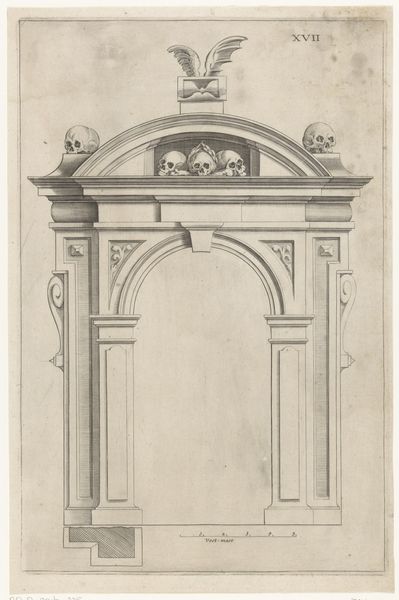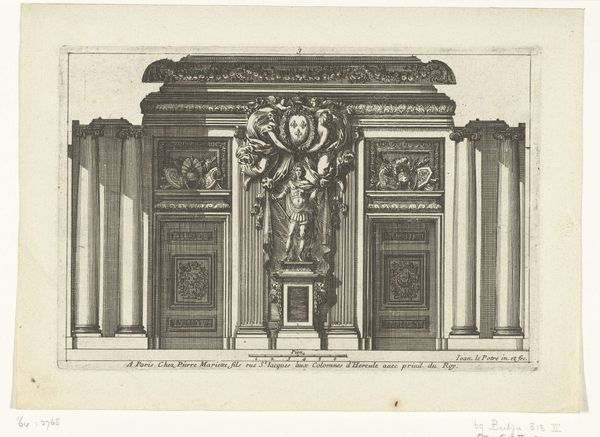
drawing, tempera, paper, architecture
#
drawing
#
neoclacissism
#
tempera
#
landscape
#
paper
#
classicism
#
history-painting
#
architecture
Dimensions: 14-7/16 x 10 in
Copyright: Public Domain
Curator: This is a drawing dating from between 1750 and 1800, aptly titled "Drawing for an Interior." Although the artist remains anonymous, we know it’s a Neoclassical design, rendered in tempera on paper. Editor: It feels strangely theatrical, doesn’t it? Almost like a stage set. The pink background is a striking choice—not quite what I'd expect for this era, yet it creates a dreamlike quality. Curator: That 'theatrical' feel isn’t accidental. Neoclassicism, drawing inspiration from ancient Greece and Rome, was often about creating idealized, imposing spaces to evoke a sense of civic virtue and grandeur, themes that certainly resonate in theater. Editor: Yes, look at the figures at the top! A classical trio. They look like they could be muses, perhaps inspiring the owner with artistic and intellectual ideas, with a touch of the erotic bacchanal! And below, there’s this almost…blank space. It begs for something to fill it. Curator: Exactly! That empty central panel could’ve housed a painting, a mirror, or perhaps a grand doorway. The deliberate void highlights the power dynamics at play in these constructed environments. A space ready to be occupied and made functional, or at least viewed as a functional addition of a museum or home. The owner would then imbue his presence on this space! Editor: The repeating patterns, the classical motifs – they speak to an ambition, a desire to align with a noble past and to remind those entering it of certain status and principles. You see it today in monumental spaces all over the world, and of course museums. Curator: Precisely. Think of it as a visual language used to communicate authority and cultural aspirations. This was the visual rhetoric of power—a silent, but effective, dialogue between space and society. Editor: Ultimately, I am moved by the fact this design on paper remains unfinished and, so, perhaps never achieved completion or reality as it exists in the artwork here. One must also appreciate, given the limitations in drawing technologies then versus the rendering capacity now, how this interior rendering could be a very compelling peek into spaces as design musings from the late eighteenth century. Curator: And, in viewing these, we gain a richer appreciation for how this interior drawing can exist not merely as sketches but as historical and social tools and mirrors from centuries prior.
Comments
No comments
Be the first to comment and join the conversation on the ultimate creative platform.

